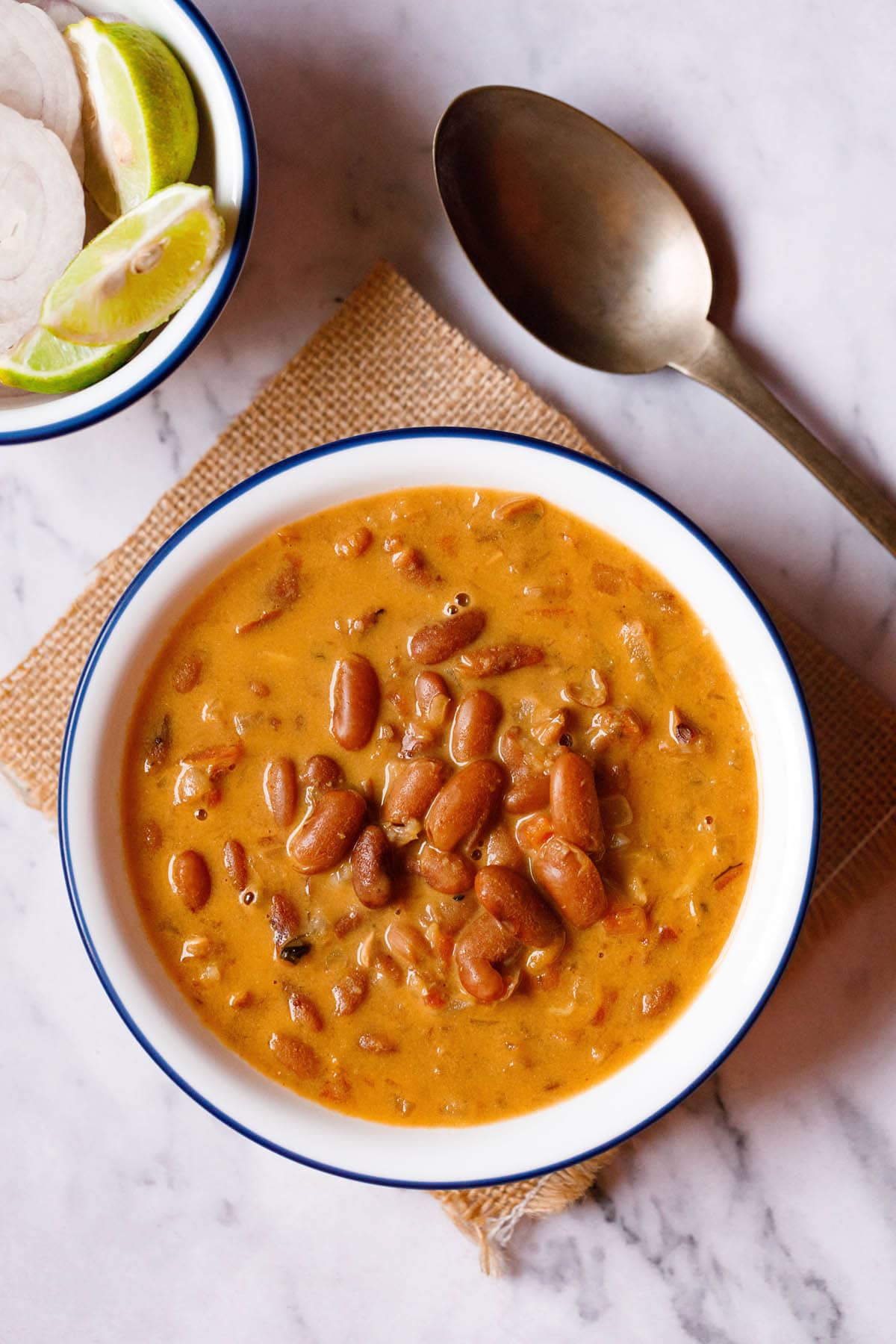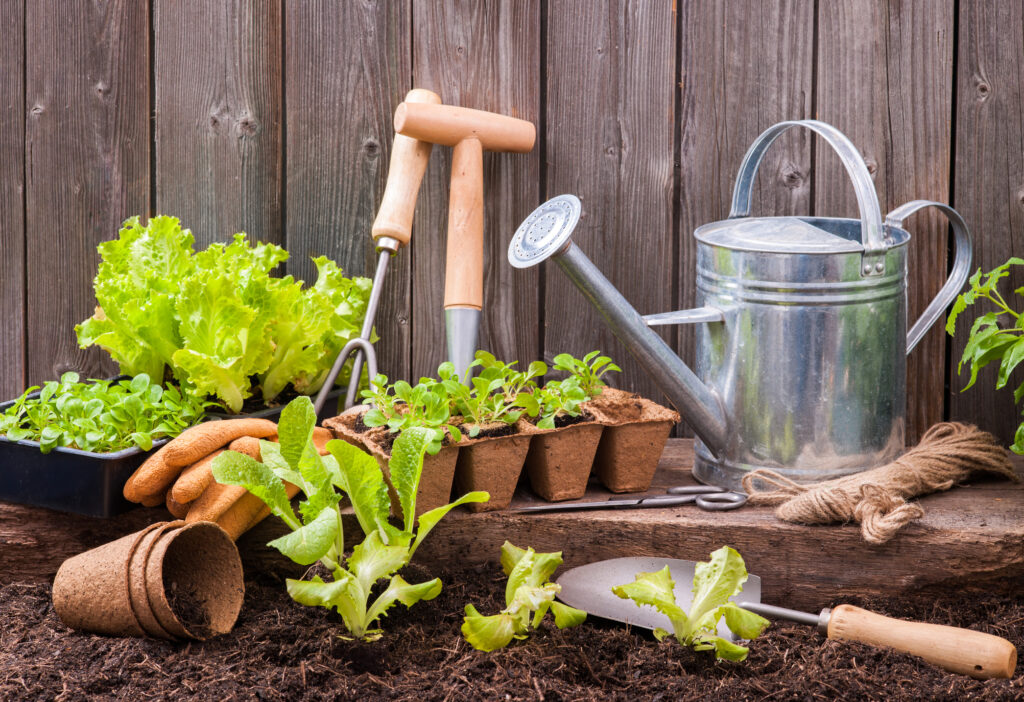This Rajma recipe is a creamy, tangy and spiced curry made with dried kidney beans. This restaurant-style Rajma Masala is made in a base of sautéed onions, tomatoes, spices and cream making it truly delicious.

Ingredients
For Pressure Cooking
-
1cup rajma – 200 grams (dried kidney beans), any variety
-
5 to 4cups water for pressure cooking
-
Enough water for soaking rajma
For Ginger-Garlic-Chilli Paste
-
-
3 to 4garlic cloves – medium-sized
-
1inch ginger
-
1 to 2 green chillies or 1 to 2 Serrano peppers
Other Ingredients
-
2tablespoons butter + 1 tablespoon oil or 3 tablespoons butter
-
½teaspoon cumin seeds
-
1 large onion
-
1cup finely chopped tomatoes or 3 medium or 2 large tomatoes
-
1teaspoon coriander powder (ground coriander)
-
¼ to ½teaspoon red chilli powder or cayenne pepper or hot paprika
-
¼teaspoon turmeric powder (ground turmeric)
-
1pinch asafoetida (hing) – optional
-
-
5 to 2cups rajma stock (the water which was used to cook the beans) or freshwater
-
salt as required
-
1teaspoon crushed kasuri methi (dried fenugreek leaves) – optional
-
2 to 3tablespoons low fat cream or half and half or 1 tablespoon heavy whipping cream – optional
-
1 to 2 tablespoons chopped coriander leaves – for garnish, optional
Instructions
Soaking
-
Rinse and soak the rajma (kidney beans) in enough water overnight or for 8 to 9 hours.
-
Next day, discard the water and rinse the beans again in fresh water a couple of times.
-
Drain all the water.
Pressure Cooking
-
In a 3-litre pressure cooker, take both the soaked rajma and water.
-
Pressure cook on a medium to high flame for 15 to 20 minutes.
-
When the rajma is cooking, you can chop the onions, tomatoes etc.
-
Crush the ginger, garlic and green chillies in a mortar-pestle to a fine or semi-fine texture. Set aside
-
When the pressure settles down on its own, open the lid.
-
Check whether the rajma beans are cooked by taking a bite or pressing a few beans.
-
If the beans are cooked well set aside or drain the beans. Reserve the stock (water) in which the beans were cooked.
-
If the rajma is not cooked thoroughly, then pressure cook again adding some water if required for some minutes.
Making Masala
-
Heat oil + butter in another pot or pan on low heat. Add cumin first and let them crackle & get browned.
-
Then add onions and sauté them till they are caramelized or golden browned on medium-low to medium heat.
-
Take care not to burn them as this will give bitter tones to the curry.
-
Light browning the onions is also alright.
-
Keep on stirring the onions while sauteing them, for uniform cooking and also so that they don’t get burnt.
-
Lower the heat and add the crushed ginger-garlic-chilli paste. Stir and sauté for 5 to 10 seconds on a low flame until the raw aroma of the ginger and garlic goes away.
-
Add the tomatoes. Sauté for 2 to 3 minutes on medium-low to medium heat until the tomatoes become soft.
-
Add all the spice powders one by one – turmeric powder, red chilli powder, coriander powder, asafoetida (hing) and garam masala powder.
-
On medium-low heat or medium heat, stirring often sauté the whole masala mixture until the fat starts leaving the sides of the masala base.
-
Using a slotted spoon or a strainer remove the beans and add them to the masala.
-
You can also strain the cooked rajma first and set it aside as mentioned above. Set the stock also aside.
-
Stir and sauté for a minute.
Making Rajma Masala
-
Take 1.5 to 2 cups from the stock and add to the rajma.
-
Add salt and stir the whole curry mixture.
-
On low heat to medium-low heat simmer without a lid for 10 to 12 minutes or more time until the curry thickens slightly. It should not be watery.
-
Mash a few rajma beans with a spoon. This helps to thicken the curry.
-
When the rajma masala has thickened and comes to the right consistency which is neither too thick nor thin, then add the kasuri methi and cream.
-
Stir & simmer for 30 seconds to 1 minute. Switch off the heat.
-
Serve rajma masala with steamed basmati rice, jeera rice or naan or roti or paratha. You can garnish with some coriander leaves when serving.
Notes
Helpful Tips
-
Soaking kidney beans: Dried beans when soaked become easier to digest as soaking reduces the phytic acid in them. The phytates present in beans cause indigestion and flatulence. Soaking also helps the beans to cook faster.
-
The texture of cooked beans: The rajma beans should be cooked very well and have a melt-in-the-mouth texture. They should not be al dente or just about cooked.
-
Quality of kidney beans: Use fresh beans within their shelf-life as older beans take a long time to cook.
-
Using canned kidney beans: When replacing with canned kidney beans, add them at the step in the recipe where cooked beans are added. Add fresh water and continue to simmer for some minutes until the consistency thickens. You can add two 15 oz canned kidney beans.
-
Gluten-free variation: Omit asafoetida (hing) for a gluten-free recipe.
-
Vegan variation: Instead of butter use oil and skip the cream completely.
-
Spicing: Spices in the rajma curry can be adjusted as per your taste.
-
Cooking beans in a pot or pan: Soak the beans as usual for 8 to 9 hours. Drain them and rinse them with fresh water. In a large pot, add enough water, soaked beans and salt. Cook covered for about 45 minutes to 1 hour or more if required until the beans are softened.
-
Note that the approximate nutrition info is for 1 serving of rajma without rice or roti or naan.
Ingredient Notes
-
Kidney beans: Dark red kidney beans can be used.
-
Ingredients that can be skipped: Asafoetida, dried fenugreek leaves, butter and cream can be skipped completely.
-
Canned tomatoes: You can add canned tomatoes instead of fresh ones. Add 1 cup of crushed tomatoes.
Source: vegrecipesofindia.com
Reader's opinions








